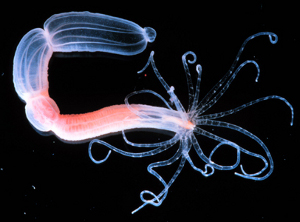Hydra Under Microscopes
Introduction:
Hydras are small freshwater organisms that live attached to plants or rocks. Hydras do not have a complex nervous system but a very simple nerve net. How can a multicellular organism without an organized nervous system respond to environmental stimuli?
Materials:
- Compound microscope
- Well slide and cover slip
- Dropper or pipette
- Live Hydra
- Toothpick
- Live Daphnia (optional)
Instructions:
Transfer the hydra from its container to the well of the depression slide using the pipette or dropper. Observe the hydra under low power, paying attention to how the hydra’s body is arranged. The walls of their bodies are, at most, two cell layers thick, which enables them to transport nutrients to all of their cells through diffusion.
How does the hydra react to a new object entering the environment? To observe the response, place the tip of the toothpick near the hydra’s tentacles. What happens if you touch the hydra? Be careful, as it is a live organism.
If daphnia are available, you can observe the hydra’s feeding behavior. Use the pipette or dropper to pick up a daphnia and place it into the well with the hydra. Within a few minutes, you will see thin string-like structures shoot from the hydra. These structures are nematocysts, which pierce the prey and may contain poison.


